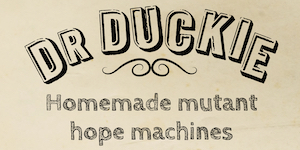
Derek Jarman set design from the Royal Ballet’s Jazz Calendar at the Cultural Institute at King’s exhibition Derek Jarman Pandemonium
And so Jarmania 2014 begins! This year, the twentieth anniversary of Derek Jarman’s death, sees a whole bunch of events dedicated to the artist and filmmaker. First out of the traps is Pandemonium, an exhibition by the Cultural Institute at King’s, where Jarman studied from 1960 to 1963, at the Inigo Rooms in Somerset House’s East Wing. It’s a pretty modest show, laid out over a handful of small rooms, and a decidedly partial one, concentrating on Jarman’s early years at King’s and the period he spent living in warehouse spaces along the south bank, from Upper Ground to Bankside to Bermondsey, before the 1980s ‘regeneration’ of the area, especially east of Tower Bridge.
As an account of Jarman’s expansive career – which, the exhibition notes remind us, took in painting, set design, poetry, gardening and activism as well as filmmaking, pop videos and writing – Pandemonium is skimpy. If you don’t already have a sense of the big-picture contours of his work, you won’t leave much enlightened. It’s more successful, however, as a portrait of the artist as a young man (he was born in 1942), and a record of the queer creative scene that flourished in London before Thatcherism and AIDS got to work.
We see selections from Jarman’s student library, from Shakespeare Jung to Pevsner, under whom he studied; his covers for student magazine Lucifer, including one reworking Biblical Renaissance painting; and his impressive, heavily geometric designs for the 1968 Royal Ballet production Jazz Calendar. There’s already a clear sense of a vibrant visual imagination wedded to interests in historical image-making and elemental, even magickal cultural lineages.
Projections of Super 8 short films from the early 1970s also show Jarman’s artistic DNA already evident in films’ use of male nudes, ritualistic movements, deep Englishness, neglected locations, found images put to fantastical use (notably postcards of the pyramids), bold palettes and palimpsest-form editing – all elements that remain evident in the 1987 feature The Last of England, shown in the show’s final room across five screens, each playing the film in full but starting at different times, like a visual equivalent of a choral round that allows strange harmonies of fire, family, beatings and boys to emerge.
The show also makes use of Jarman’s notebooks (a selection of which was recently published), providing some insight not only into his working practices but the cultural community of which he was a leading member. One particularly striking journal entry from 1979 describes his being fetched out of the Blitz club with the news that the Butler’s Wharf building containing his studio and former home was on fire. It was ruined, marking, he wrote, the end of ten years of warehouse living and “a whole style of life that enabled me to paint, make the Super 8 films and run a gay Butlins”.
That last phrase, it seems, was edited out of Jarman’s published memoir but doesn’t it sound fun? The sense of spirited artistic fellowship comes shining through here in relics like the entrant number (24) that Jarman wore when, as Miss Crepe Suzette, he triumphed at Andrew Logan’s 1975 Alternative Miss World; or the campaigning letters and leaflets aimed at creating some sort of cultural and community-oriented spaces on the river before commercial development was allowed to take over entirely.
Of course, we know how that turned out. A few years later, Jarman asked Logan whether he thought London had reinvented itself or simply died. “Died,” Logan replied, “but I love a funeral.” Funny, and gratifying, how the city’s underground keeps clawing its way out of the grave. And pleasing that even those who are inarguably gone, like Jarman, remain unforgotten.
Derek Jarman: Pandemonium is at the Inigo Rooms, Somerset House East Wing, King’s College London, Strand WC2R 2LS. Open 12pm-6pm (Thur 8pm) Jan 23 to Mar 9. Admission free.

